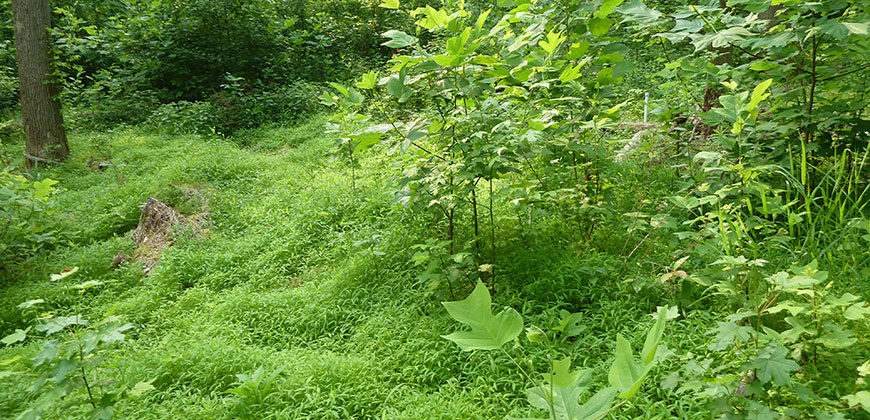
Japanese stiltgrass, an example of an invasive plant species.
From Japanese kudzu to the Burmese python, thriving non-native species are called “invasive” for a reason – they wreak havoc with ruthless efficiency on their new environments. So effective are these invaders that studying their spread has its own field: invasion biology.
Colorado State University biologist Nathan Lemoine has led a study seeking to understand whether introduced species succeed because they’re fundamentally different from native species. The answer, he says, is no.
That is, there’s nothing special about introduced species and the fact that they’re geographically foreign. Instead, the same processes and genetic traits that enable native species to thrive are the same ones that give non-native species the upper hand when they arrive.
The study, done in collaboration with the Smithsonian Institution and launched while Lemoine was a graduate student at Florida International University, was published in a May issue of the journal Trends in Ecology and Evolution. Lemoine is a postdoctoral researcher in the lab of Professor of Biology Melinda Smith.
“We’re not saying we shouldn’t worry about invasive species, but that we should change the way we think about what enables them to succeed,” Lemoine said.
New test quantifies species’ success
The paper describes a new test that quantifies non-native species’ success-driving characteristics, including growth rate, reproductive effort, seed mass and photosynthetic efficiency. They used available data from two case studies: U.S. temperate forests and California grasslands.
In the paper, they argue that geographic origin doesn’t matter with regard to a species’ ability to thrive. Their success rests solely in their inherent traits. In fact, native species can be problematic to their home environments: cattails in the Everglades, or Canadian geese in North America, for example. Many species can become invasive given a change in their environment, such as loss of predators or competitors, or an influx of nutrients. Geographic origin has little to do with any of that, Lemoine says.
Better identifying potential invaders
The work could lead to the ability to more quickly identify what might become invasive, and to curtail their negative effects. “Community ecology has almost a century of foundational work behind it,” Lemoine said. “If successful invaders are just doing what everything else is doing, we can take that long history of community ecology and make more accurate predictions about what species might become problematic.”